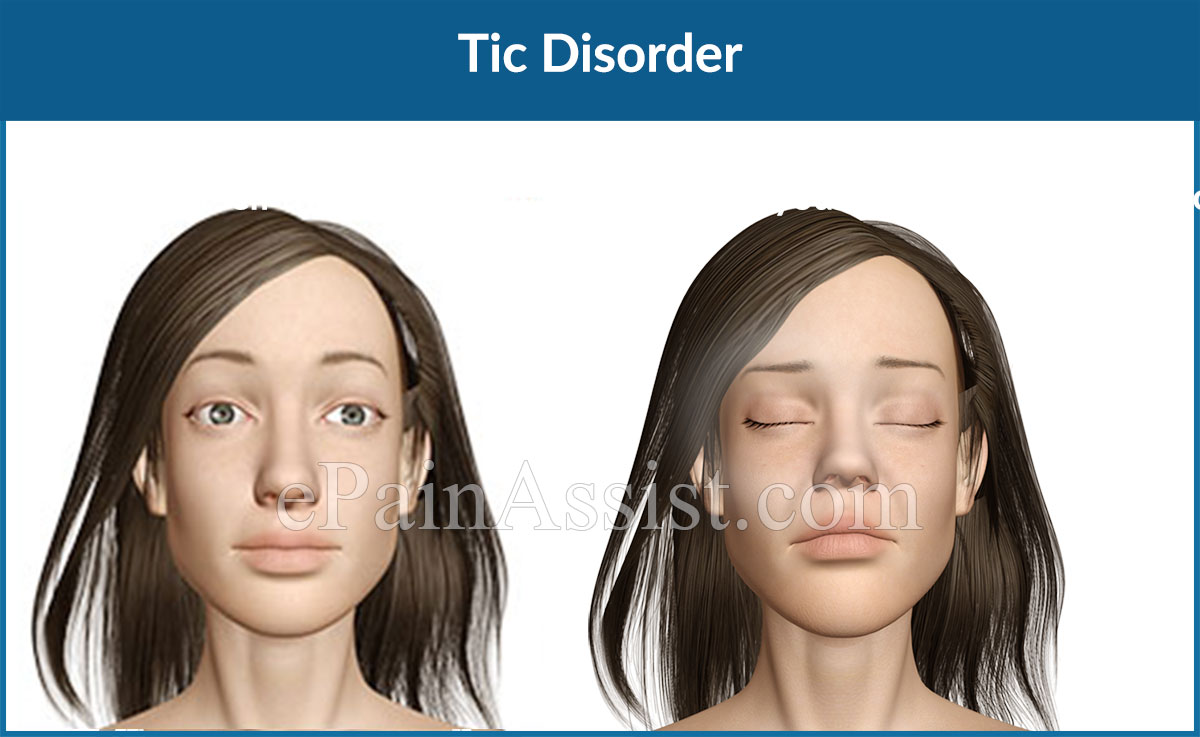What Is Tic Disorder?
A tic is a condition where a person makes sudden and uncontrollable movement or sound which is not one of the normal gestures of a person and he/she does it unintentionally.1 A person who is suffering from tics may rapidly and repeatedly blink his/her eyes or twitch their nose repeatedly when there is nothing to irritate them. Most of us, at some time in our life, experience spasm-like movements of some specific muscles. These are known as tics and twitches and they commonly affect the eyelids or face. However, they can occur in any part of the body. In many cases, these tics and twitches are temporary and harmless; whereas in some cases they can be from a tic disorder. Tic disorders can be often managed with treatment and changes in lifestyle.

There are 2 types of Tic: Motor tics and Vocal tics.2 Each person has different types of tics and they make either uncontrolled noises or movements. Children more commonly suffer from tics than adults and they can last for less than a year. A child suffering from transient tic disorder has obvious physical or vocal tics. However, any person of any age can suffer from tics.
Motor tics are then classified in to simple motor tics and complex motor tics. Simple motor tics include movements like nose-twitching, eye-blinking, shoulder-shrugging or head-jerking.2 Complex motor tics are those where a person performs a series of movements in the same order.
In most of the cases, tics are not severe and do not cause a problem in a person’s daily activities. There are some cases, however, where tics can trouble a person to the point of affecting his/her quality of life and need medical attention.
Tourette’s syndrome is the most prominent tic disorder where a person experiences both physical and vocal tics at the same time.
Causes of Tic Disorder
The exact cause of tic disorder is not known. There are thought to be a combination of factors which cause tic disorders:
- According to research, tic disorders can also be inherited.
- A genetic mutation can also cause tic disorders, as it can cause Tourette’s syndrome in some very uncommon cases.
- Brain abnormalities can also be responsible for tic disorders.
- Imbalance in neurotransmitters can result in transient tic disorder.
Signs & Symptoms of Tic Disorder
Some of the tic disorders include chronic motor or vocal tic disorder, transient tic disorder and Tourette’s syndrome. Tics are commonly confused with nervous behavior, as they intensify or increase when a person is under stress and do not occur during sleep. Tics, even though, they occur repeatedly, do not often have a rhythm. Some of the common repeated and uncontrollable actions which people suffering from a tic disorder do are:
- Raising their eyebrows.
- Flaring their nostrils.
- Rapidly blinking their eyes.2
- Shrugging their shoulders.
- Clenching their fists.
- Repeatedly clearing the throat.
- Clicking the tongue.
- Making certain noises like continuously groaning or grunting.
Investigations to Diagnose Tic Disorder
There are 4 characteristics which doctors use to identify and diagnose tic disorders and they are:
- Person’s age when the tics started.
- The amount of time the tics were present.
- The severity of the tics.
- The type of tics, whether they are motor or vocal or both.
The presence of one or more tics for a minimum of one month, but less than one year is known as transient tic disorder. Chronic tic disorder can be present for more than a year.
There are no specific tests to diagnose tic disorders. The doctor will perform physical exam and take a complete medical history of the patient to find out the underlying cause of the tics. Some of the tests, which are done to find out more serious disorders, such as Huntington disease include blood tests and brain scans.
Treatment for Tic Disorder
- Children usually do not require treatment for tic disorder, as it often goes away on its own. The child’s family members and teachers should not call attention to the tics, as this can make the child self-conscious and worsen his or her symptoms.
- If tics are affecting a person’s quality of life, then a combination of medication and therapy is used.
- As stress tends to make tics worse, stress management techniques are taught to the patient.
- Cognitive behavioral therapy is also helpful in treating tic disorders where the patient is taught to avoid self-destructive actions such as by controlling their thoughts, behaviors and emotions.
- Medications also help with in relieving the symptoms of tic disorders; however, they cannot completely cure them. Medicines, such as fluphenazine, pimozide and haloperidol help in reducing the brain chemical dopamine which is related to tics.
- Antidepressants are also prescribed for managing tic disorders where they help with sadness, anxiety or obsessive-compulsive disorder and other such complications of the disorder.
- Usually, tics subside or disappear in a few months. Patient should keep an eye on their symptoms as a transient tic disorder can develop into Tourette’s syndrome, which is a more serious condition.
- Life can be quite frustrating for patients suffering from tic disorder. However, treatment helps in managing the condition. Patient should try to keep stress at bay which will help in relieving the symptoms.
- As mentioned above, the therapy along with medication greatly helps in alleviating and coping with the symptoms and makes a person lead as much of a normal life as possible.
